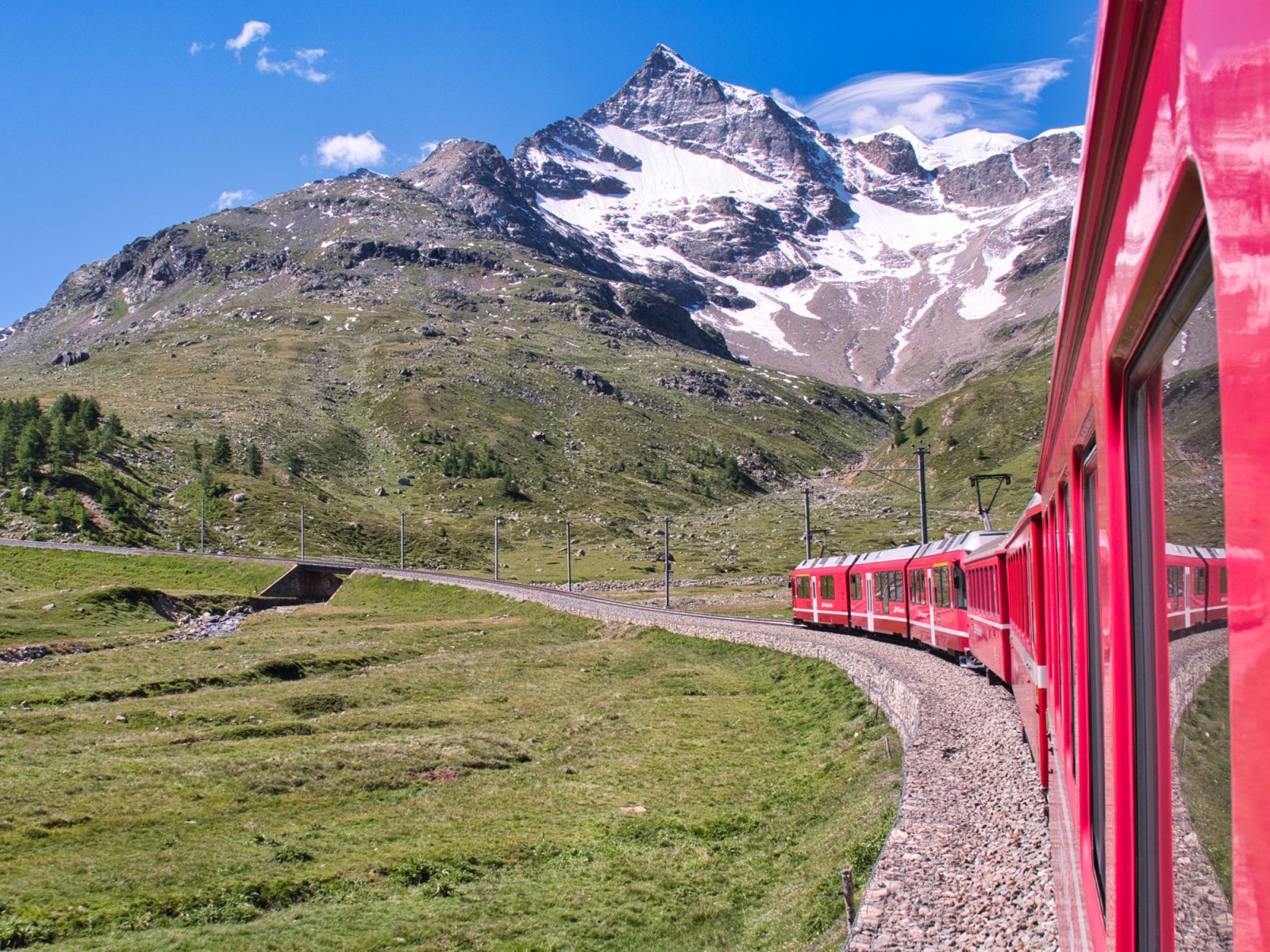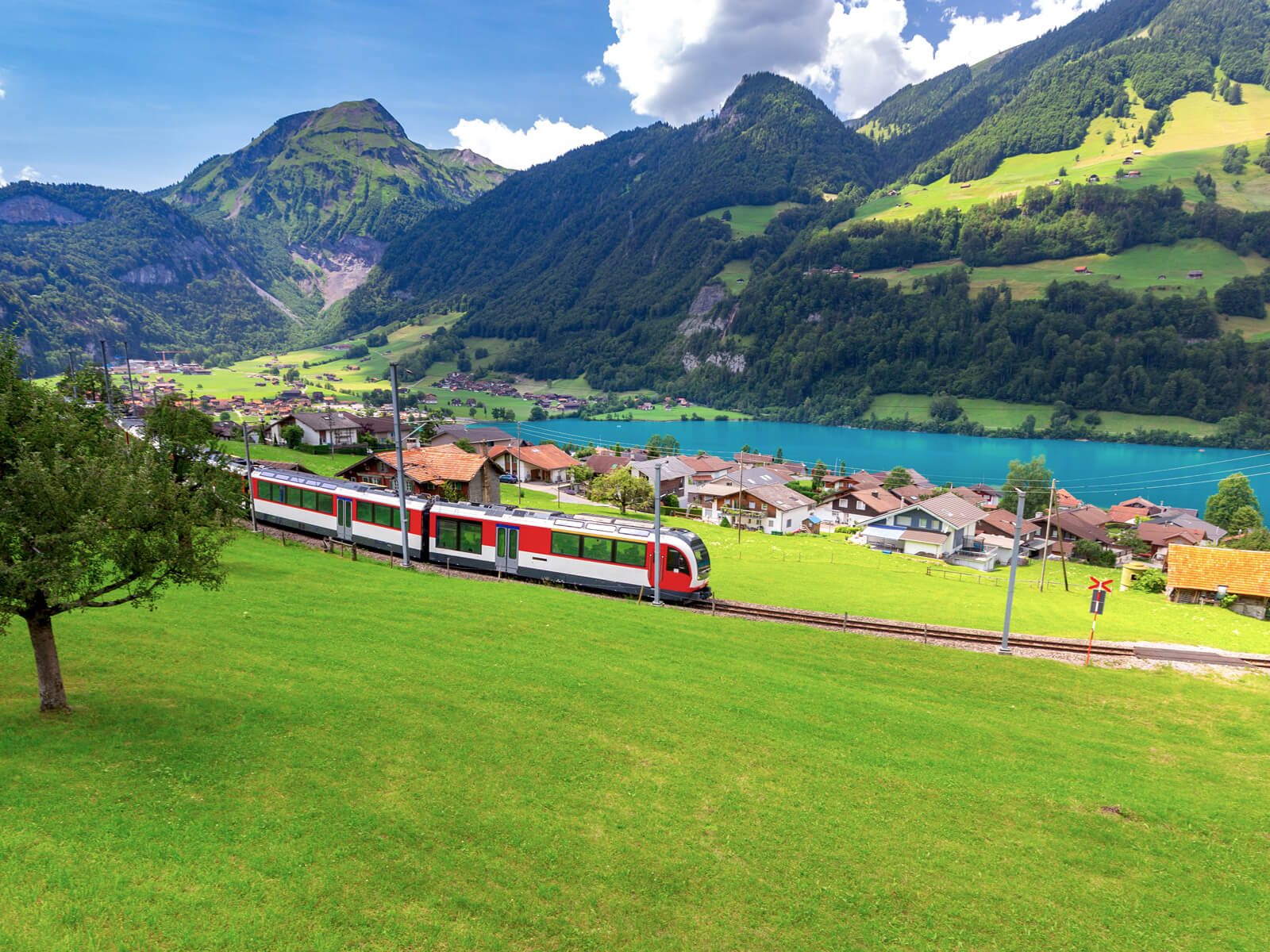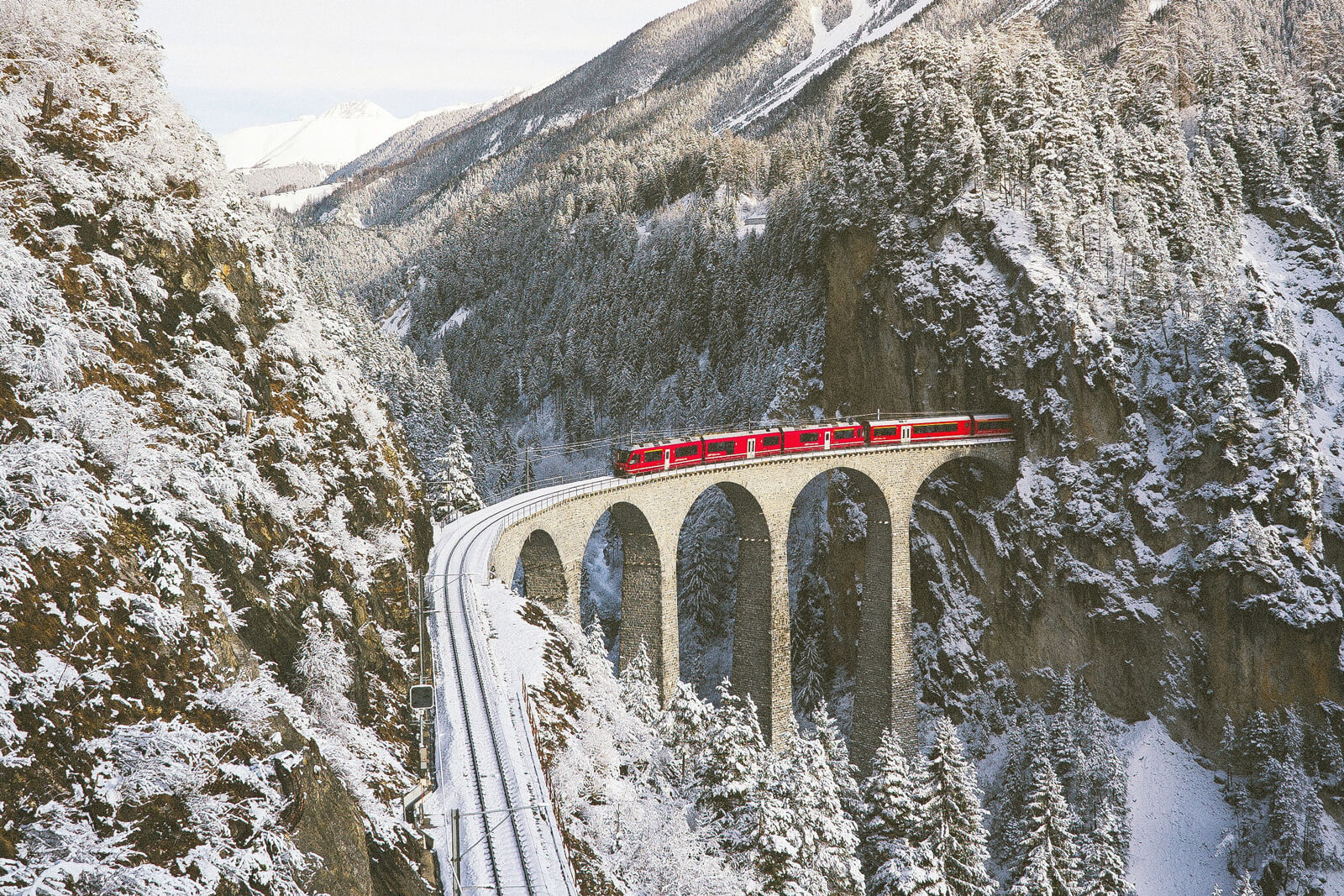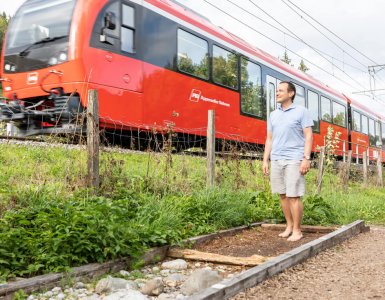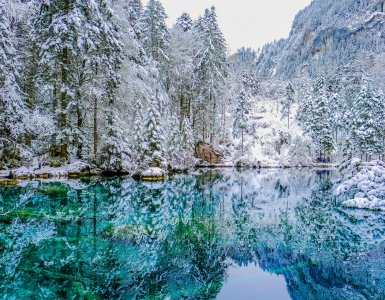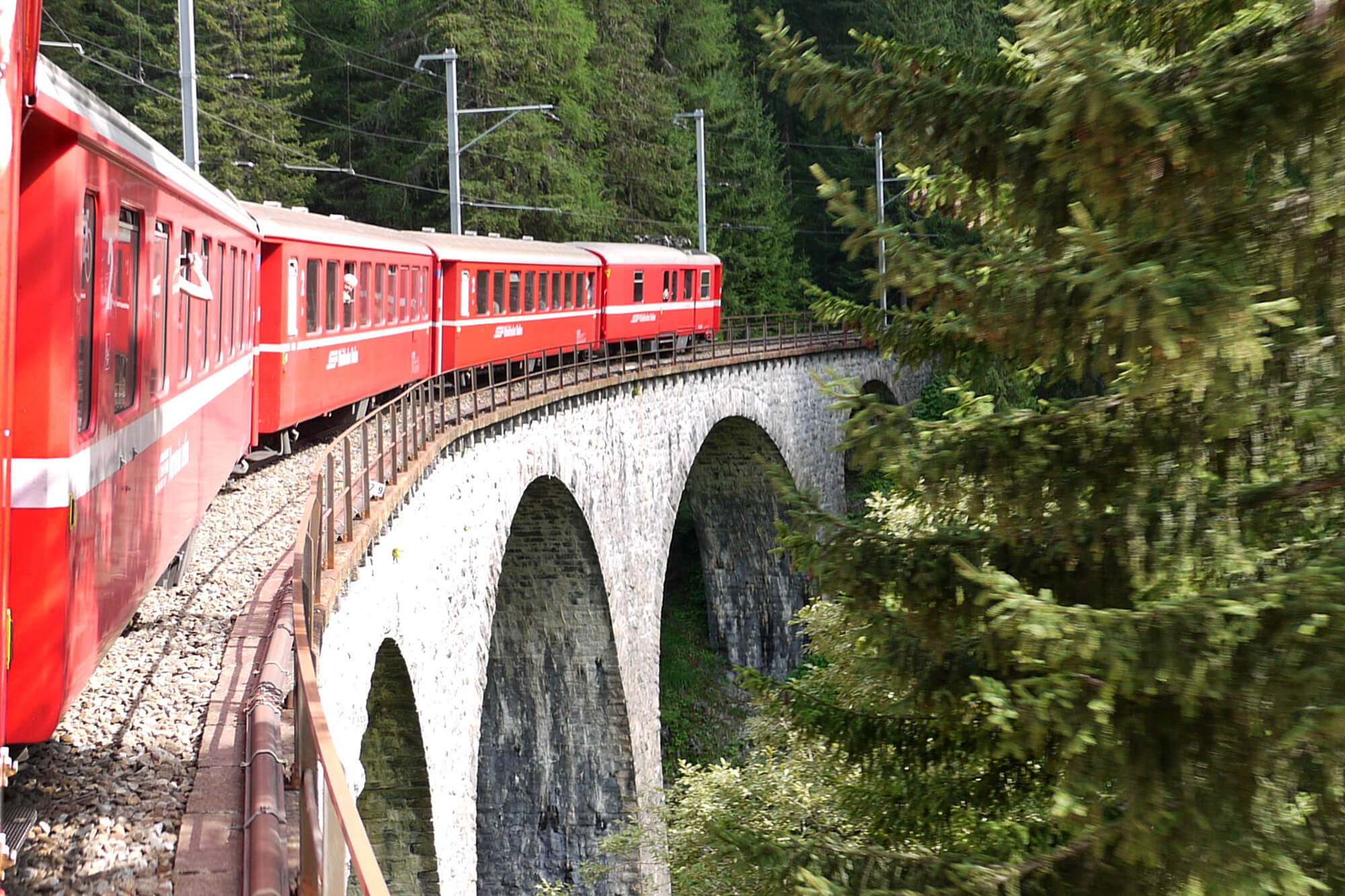
Switzerland has its fair share of jaw-dropping train journeys. Each train tour brings you the comfort and ease of train travel combined with the beauty of the Swiss mountains.
One of these world-renowned train lines in Switzerland is the Bernina Express. It's an architectural wonder in that it easily navigates the high altitudes between valley and peak. It connects the rugged Swiss Alps with the Mediterranean south.
Read our ultimate guide to the Bernina Express railway line to learn how to take advantage of this bucket-list-worthy experience best.
A Brief History of the Bernina Express Train Line
Before you embark on this fantastic journey, you should know one thing. You will not be on one but two amazing railways: the Albula Line and the Bernina Line. Both lines have been considered UNESCO World Heritage sites since 2008, with the trendy town of St. Moritz in between.
Both lines opened at slightly different times: 1904 for the Albula Line and 1908 for the Bernina Line. The lines use differing types of electric power. Originally, they served different purposes for the region.
Then in 1969, the Rhaetian Railways (Rhätische Bahn, RhB) opened a through-and-through service from Chur to Tirano. Bear in mind that other services are available from Davos, Landquart, and St. Moritz. So, wherever you are staying in Graubünden, there will be an opportunity to catch the Bernina Express easily.
Some Bernina Express trains operate on their own. Others are attached to the local RhB regional services. Either way, you will recognize the Bernina Express thanks to its imposing panorama windows, available in both first and second class! These will not let you miss any bit of the show.
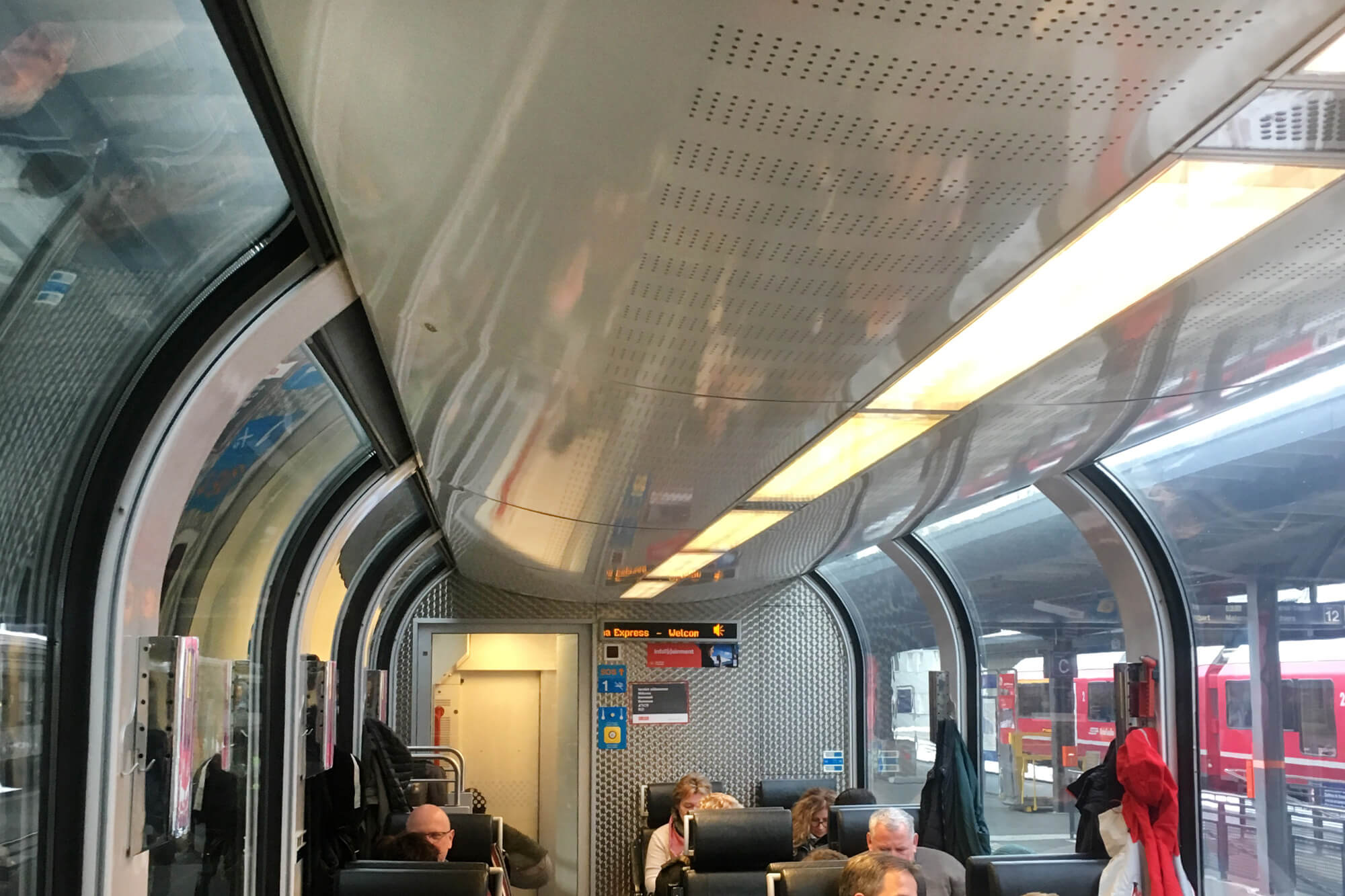
From Chur to St. Moritz on the Albula Line
The service from Chur leaves at 8:32 AM and takes 4 hours 17 minutes to Tirano. (Try not to be late, as this is the only smooth connection without transfers.) Chur is the oldest town in Switzerland and the capital of the Grisons (Canton Graubünden). And as the train pulls out of this historic town, you will first follow the young Rhine river.
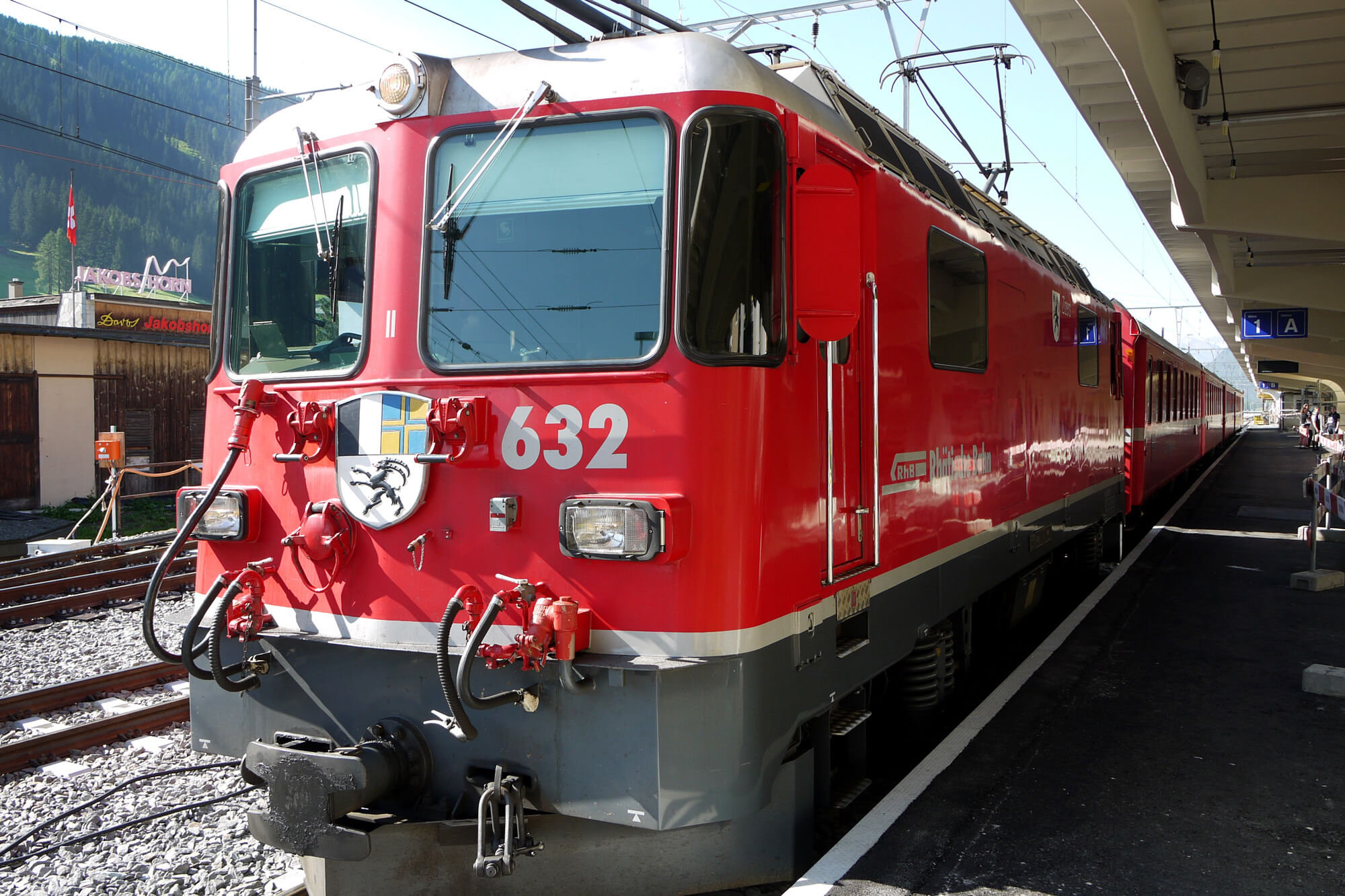
Along the river, dozens of castles and fortresses are scattered across the valley, as it used to be an important thoroughfare. Slowly but surely, the train gains altitude. Yet at no point in the entire journey will it need a cogwheel, despite reaching gradients of seven percent!
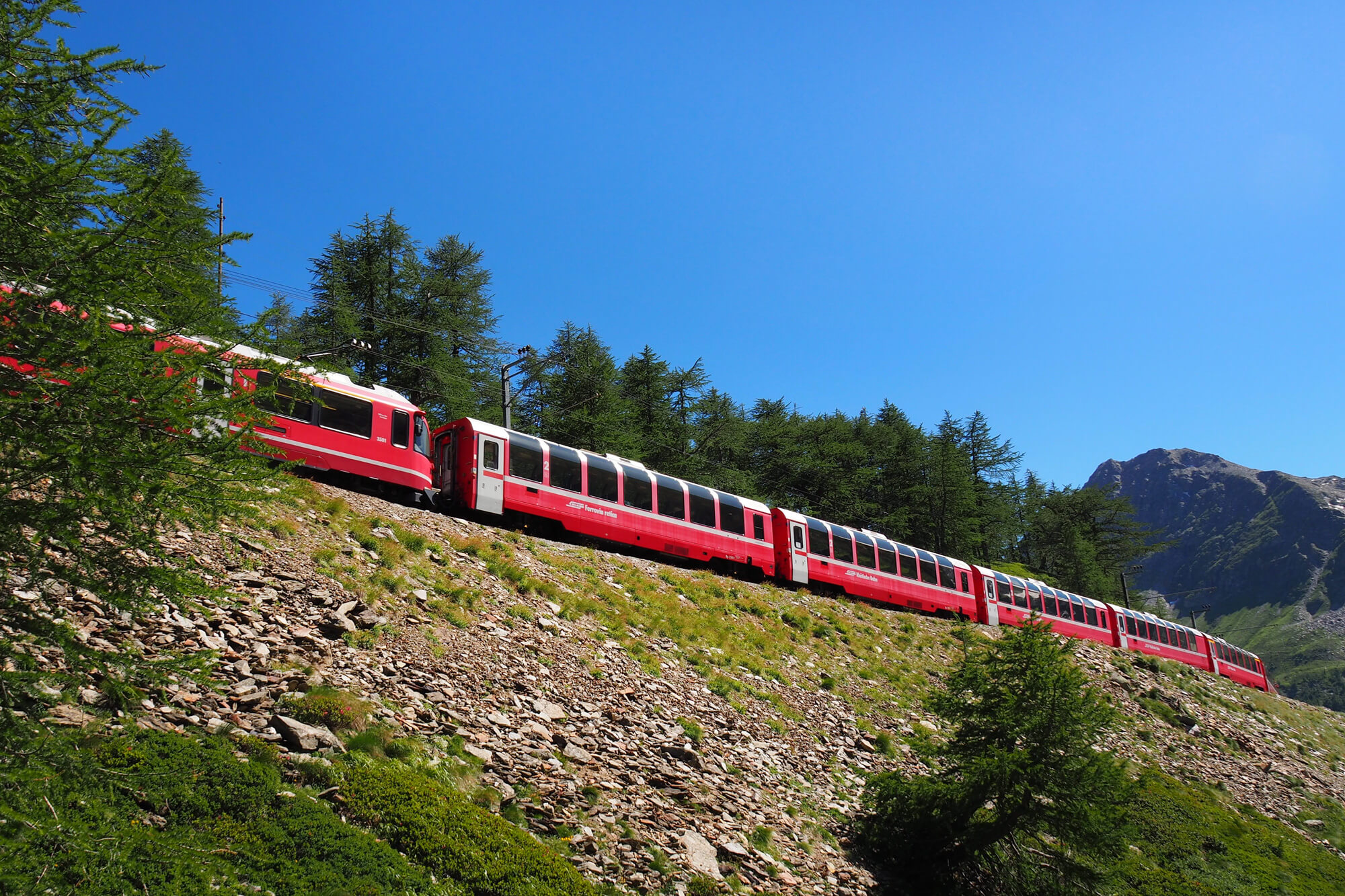
The Albula Railway Braves Extreme Natural Conditions
The entire journey has no less than 55 tunnels, with three of them being spiral tunnels. Basically, you will be going up and up in a snail-shaped manner... There are also 196 bridges, such as this one:
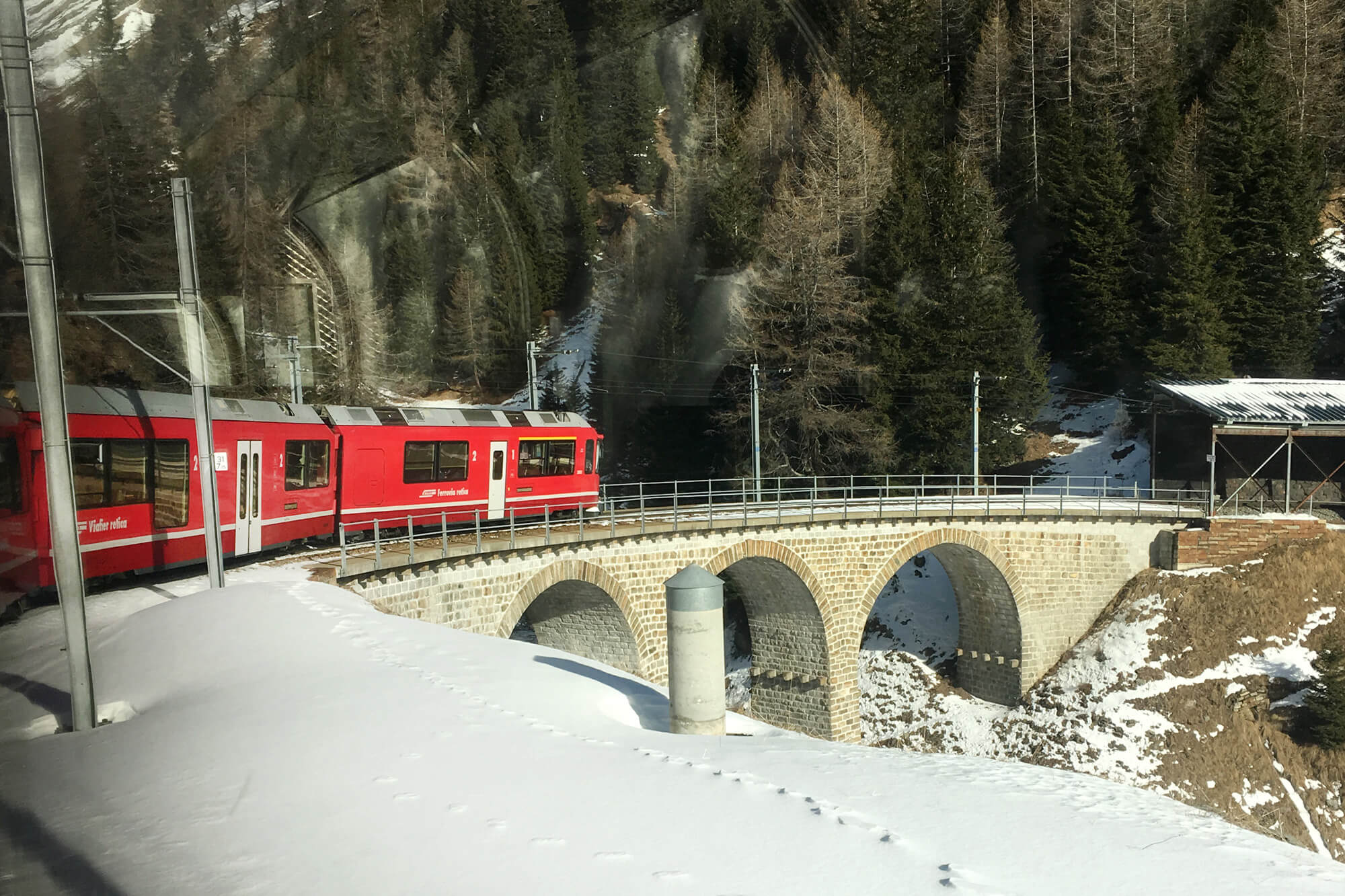
The Iconic Six-Arched Landwasser Viaduct
You will easily recognize this masterpiece just outside of Filisur. Traveling across the 136-meter-long viaduct may take all but a few seconds, but it is definitely a memorable experience:
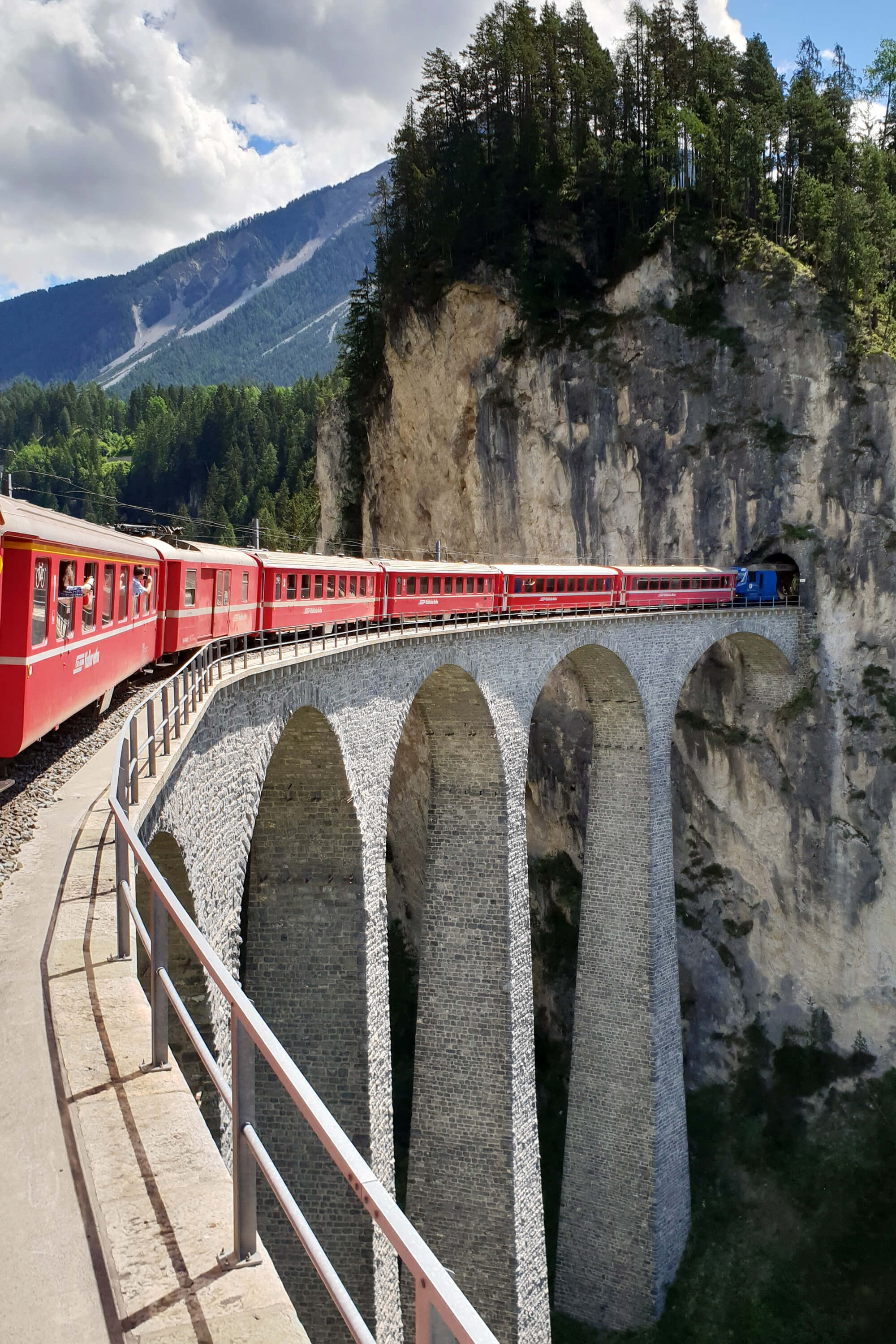
There is Much to Do in Bergün!
While Graubünden is a huge playground, there is one area that particularly caught my fancy. The tobogganing run from Preda to Bergün follows the train tracks at multiple points. The run lasts half an hour and takes you through 7 kilometers of wooden and alpine territories. It is an amazing experience that shows that getting off the train can also be the fun part of the journey.
The town of Bergün is also home to the Albula Railway Museum. It is a worthwhile destination for those who want to learn about the history and heritage of this technological masterpiece. The museum is packed with interesting artifacts and historical video footage. It is even possible to dress like a conductor or watch a miniature railroad.
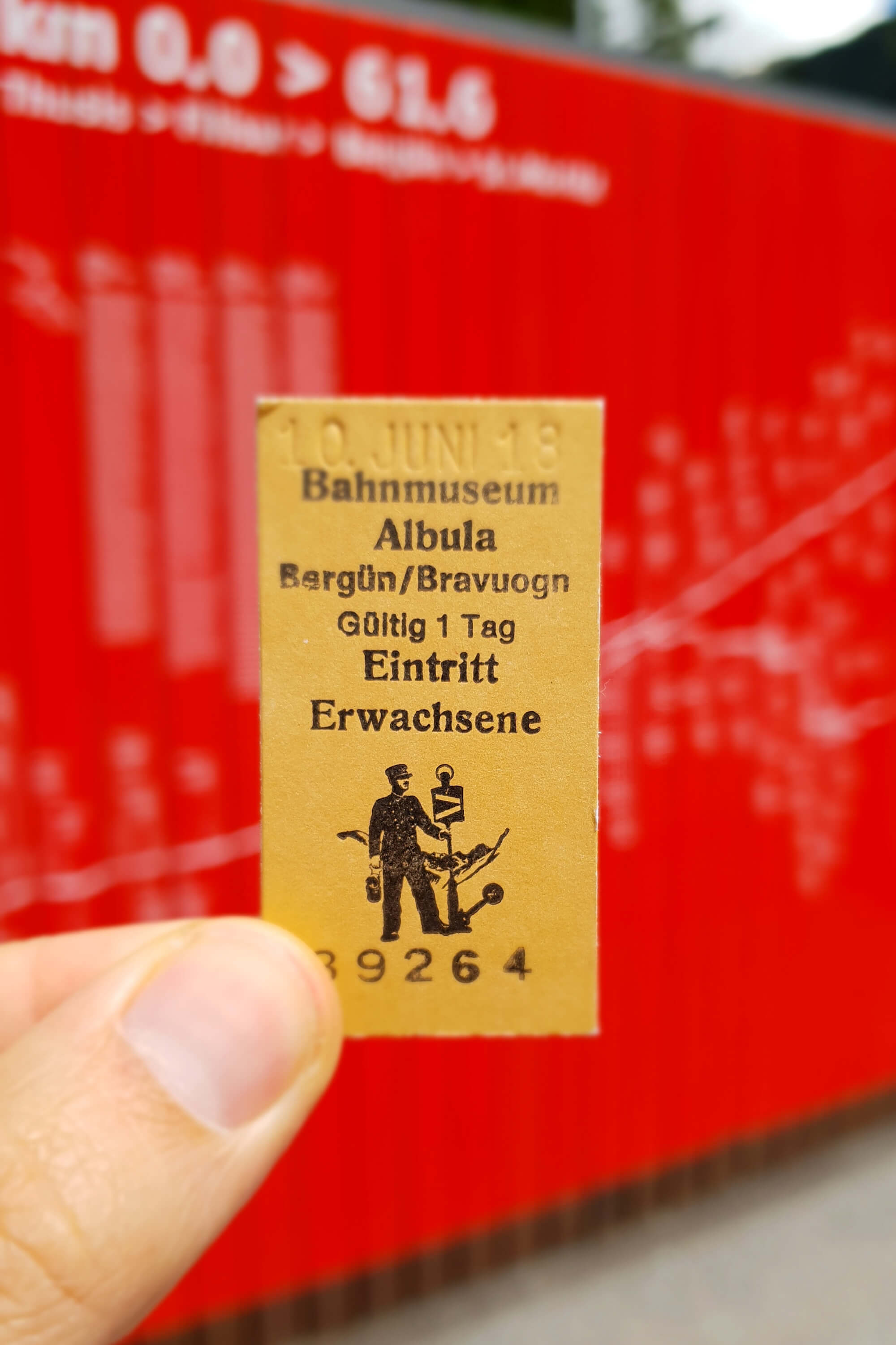
The museum is closed on Mondays but opens at 10 AM on the remaining days. It would be cumbersome to try and do the Bernina Express to Tirano while visiting the museum. So, do the museum on a separate trip entirely.
Yes, Bergün has much to offer. After the museum, you could have lunch at the Kurhaus Bergün, then stroll around the cutesy old town.
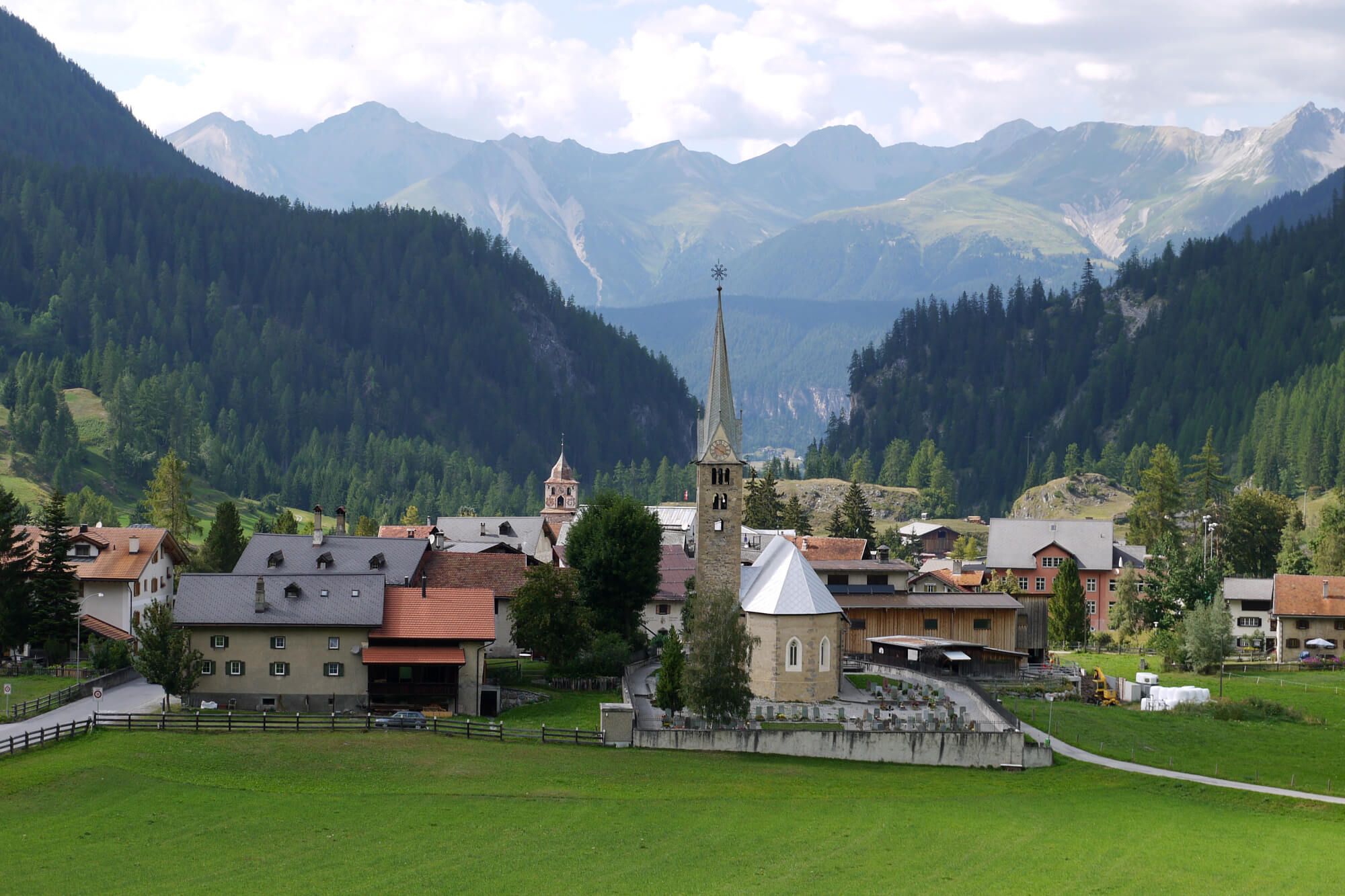
From St. Moritz to Poschiavo on the Bernina Line
If you are traveling on the Chur to Tirano service, the train will bypass St. Moritz. You will seamlessly enter the second leg of the journey: the Bernina Line. (The Albula Line ends in St. Moritz). The Bernina Line had to be built with less funding. Thus, it has far fewer tunnels and viaducts. But this does not mean that it is less impressive!
For instance, consider the majestic Morteratsch Glacier just past Pontresina on your right-hand side:
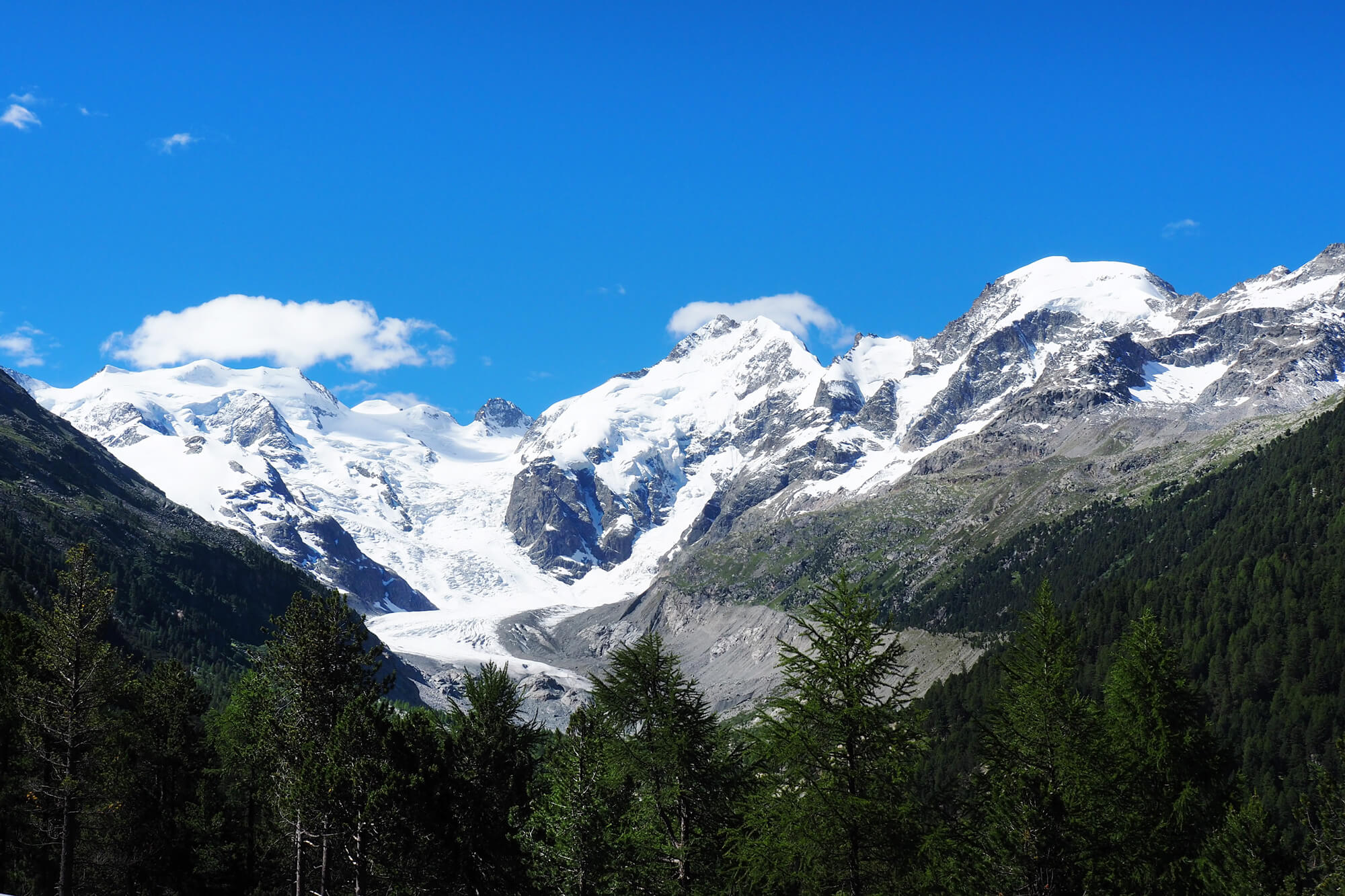
The Bernina Line is all about altitudes. It reaches the highest point on the trip, the Ospizio Bernina, at 2253 meters above the sea. Amazingly, there is no cogwheel technology needed to reach it. This feat makes the Bernina Line the highest railway in Europe without a cogwheel.
Once the train reaches the majestic Lago Bianco and snakes along its banks, it will stop for fifteen minutes. This lets you take pictures, soak in the magnificent views, and enjoy the sun.
Fun fact: Lake Bianco is a watershed, feeding the Baltic Sea to the east and the Adriatic Sea to the south.
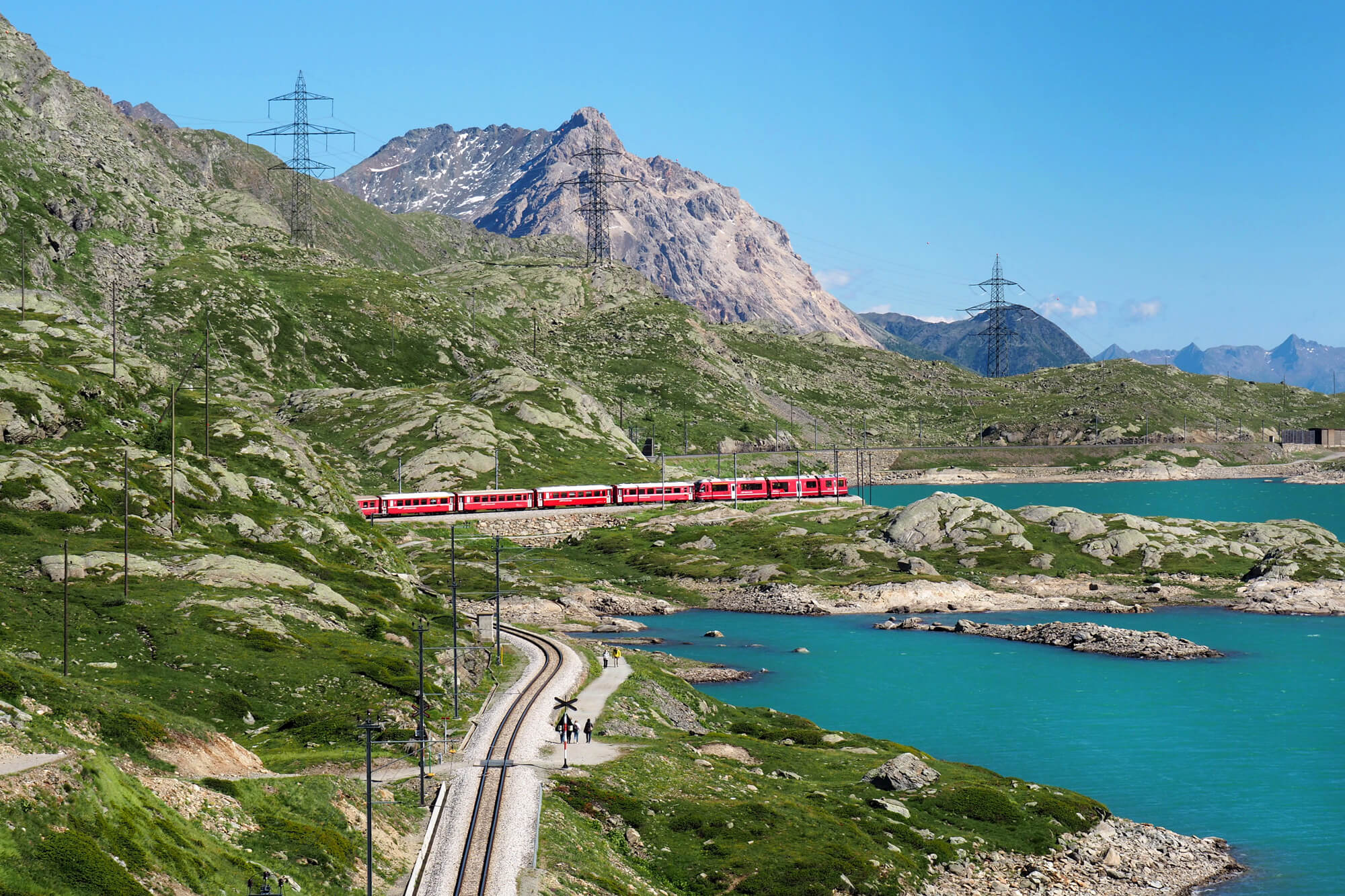
Alp Grüm is the last stop before the Bernina Express continues its descent towards the Italian border.
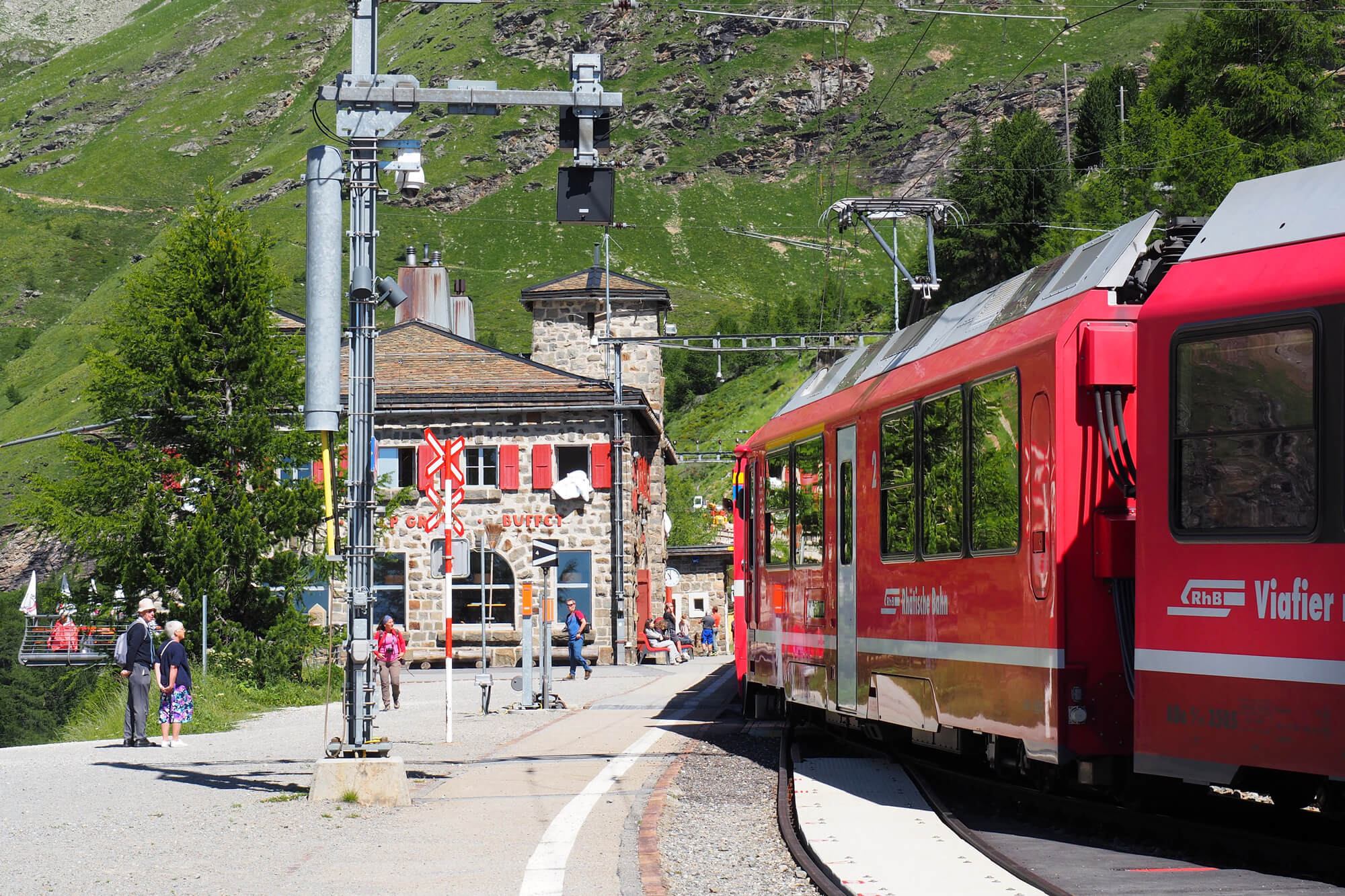
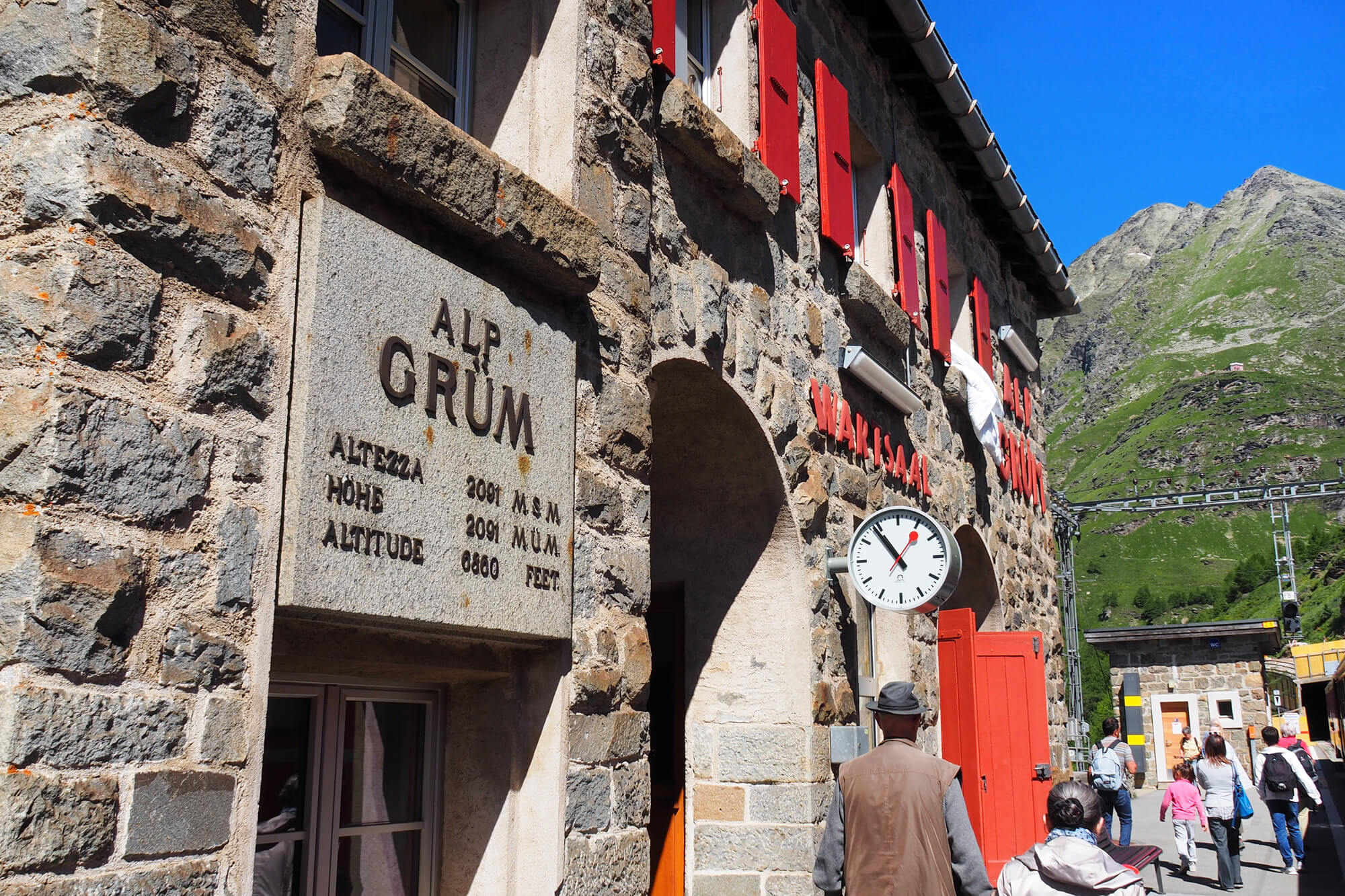
In case you decide to hop off here, the Albergo Ristorante Alp Grüm at the station offers magnificent balcony views:
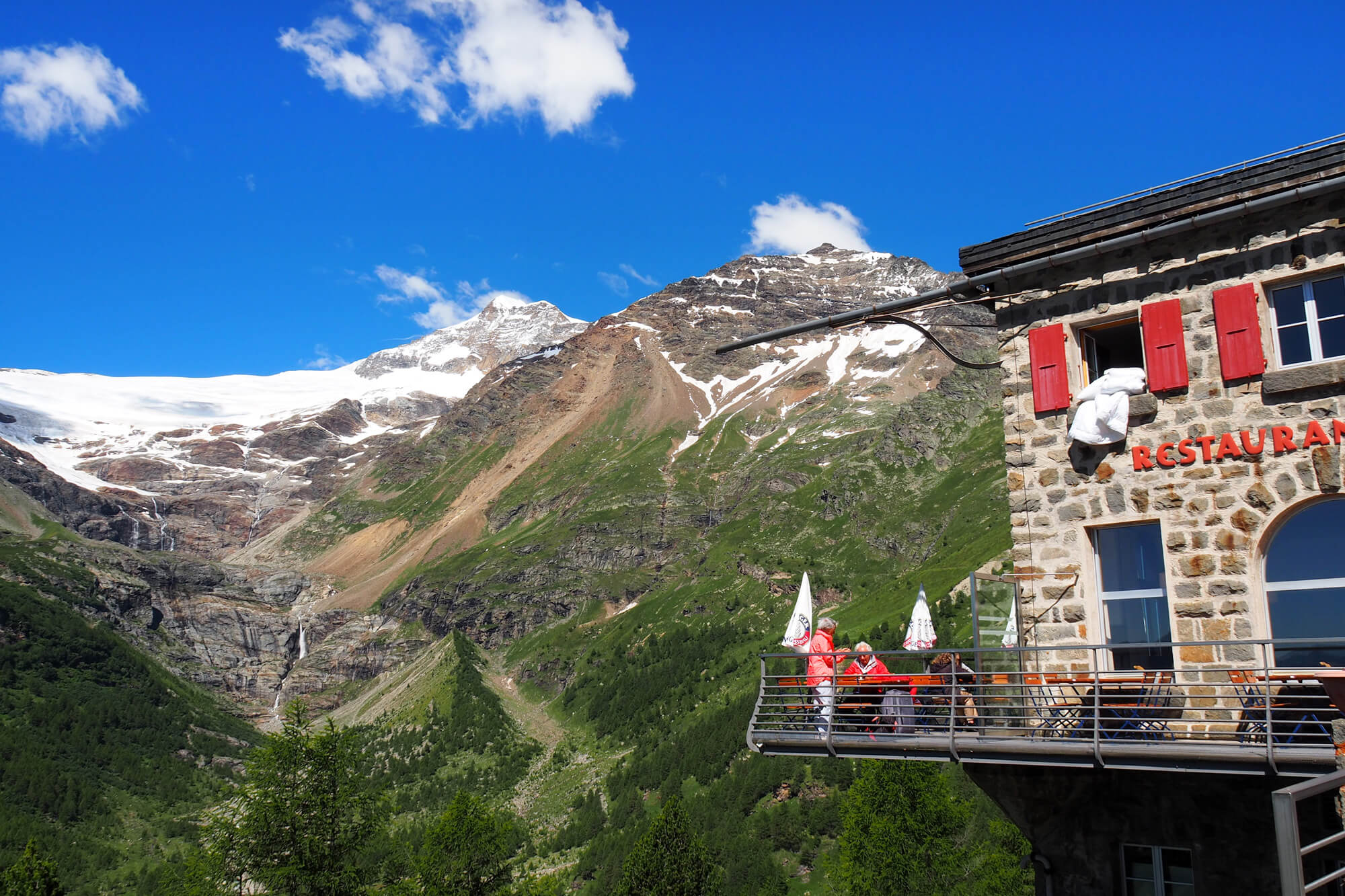
Right below Alp Grüm is this impressive curve which sets the tone for the remaining descent into the valley of Poschiavo:
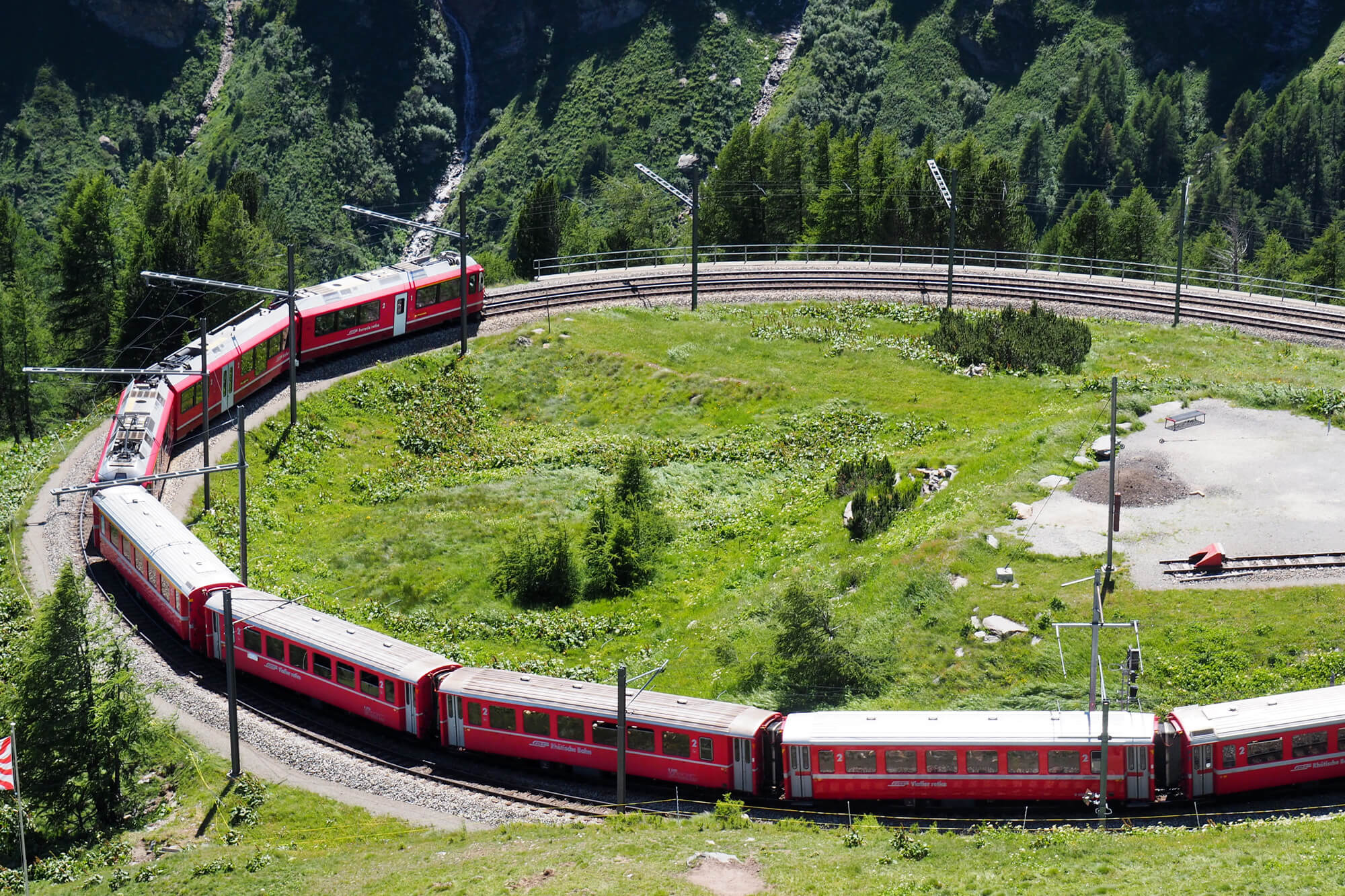
The outside temperatures will slowly increase. Palm trees will pop out here and there. And you will feel like speaking Italian all of a sudden.
The final noticeable feat of engineering is the Brusio spiral viaduct. This iconic piece of architecture helps to limit the gradient to seven degrees.
Within a minute, you will be traveling on it - and under it! And just a few moments later, you will enter the town of Tirano with its winding streets.
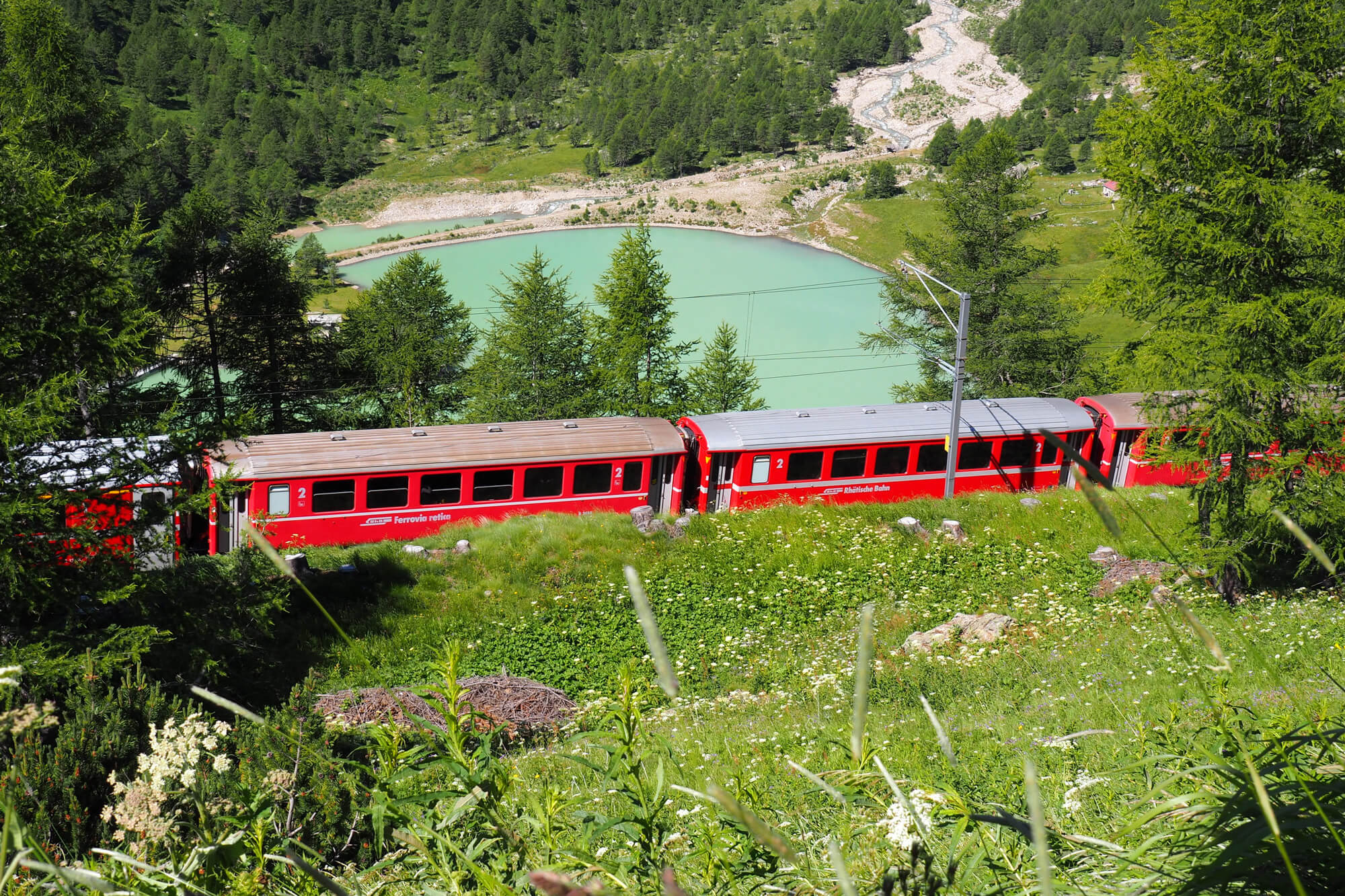
Some Options to Continue your Trip from Tirano
Once you have reached Tirano, you have officially left Switzerland and entered Italy. The train will arrive on time for an Italian pranzo (lunch). From Tirano, you have lots of options. Of course, you could take the Bernina Line back towards St. Moritz. (It leaves about an hour and a half later.)
You could also take an Italian train that will take you to Milan via the banks of Lake Como. In summer, the journey can be extended with the Bernina Express bus from Tirano in Italy to Lugano. From there, you could continue your Mediterranean experience in Switzerland's Ticino region.
From May 11, the Bernina Express will be extended by 45 kilometers as it will commence in Landquart instead of Chur. The scenic ride through the Prättigau Valley and a wild gorge between Davos and Filisur is a true enrichment for this (already amazing) railway journey.
My Advice for Traveling on the Bernina Express
With so much to see on both sides of the tracks, there is no particular side I would recommend sitting on. However, you will generally see more landmarks and highlights by sitting on the right-hand side. (That’s in the direction of the train.)
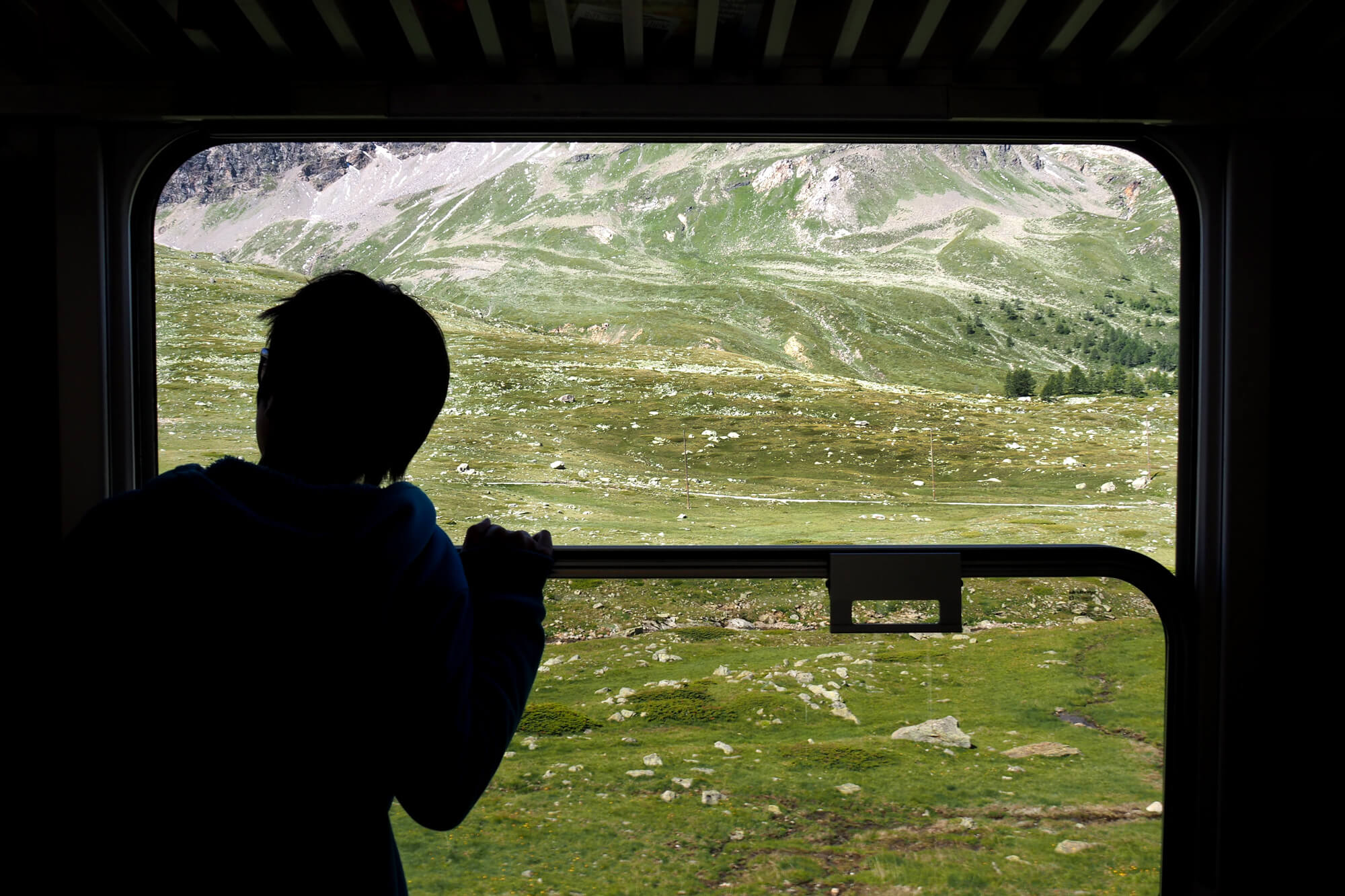
This is true for the Morteratsch Glacier near Pontresina, the Lago Bianco, and the Brusio spiral. Also, the Landwasser Viaduct between Filisur and Bergün is best enjoyed by sitting on the right-hand side.
You will be watching the engine crossing the viaduct and entering the tunnel. Generally speaking, a coach at the end of the train allows you to see the front of the train in the curves.
Once you have enjoyed the wide and high panoramic windows, you may think there is no better way to experience the scenery.
Wrong! In the summer months, you can choose to hop onto the yellow, open-air carriages. This is an amazing way also to enjoy the fresh mountain air and to take the best pictures.
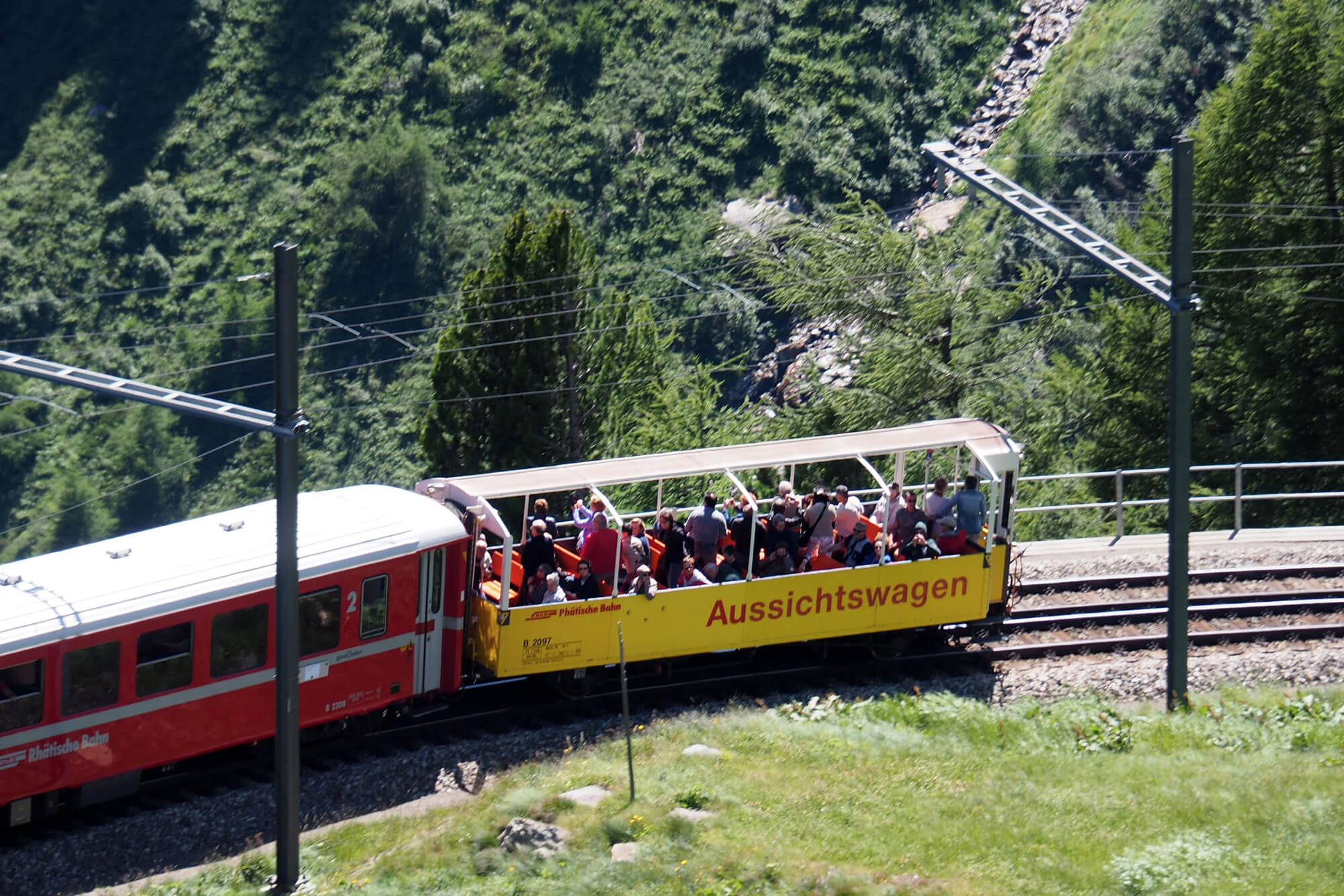
The Bernina Express may well be the best train experience out there. And it is one of the most Swiss trains. It crosses many different types of landscapes and three national languages. And it connects the Alps to the Mediterranean world. Switzerland is the best country in the world for trains, no?

